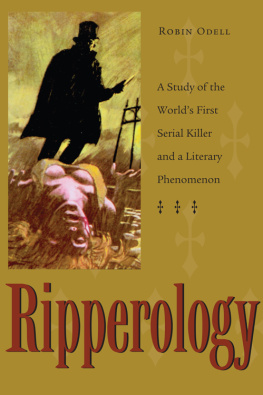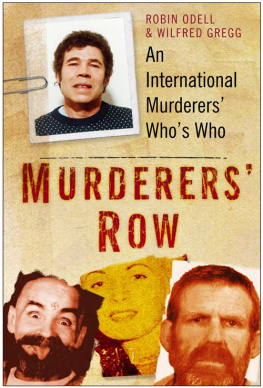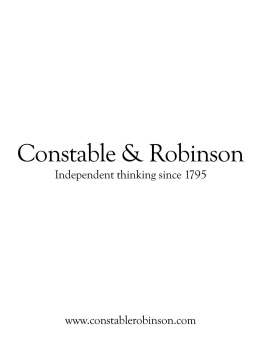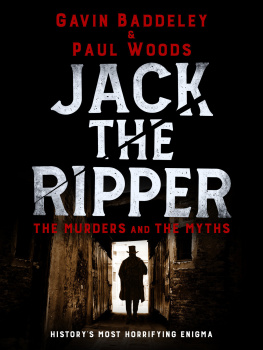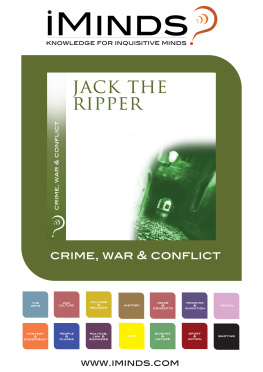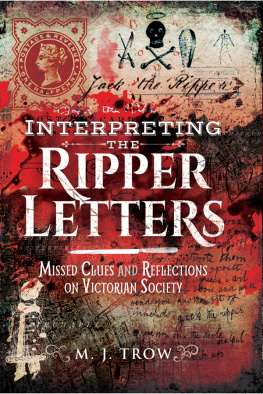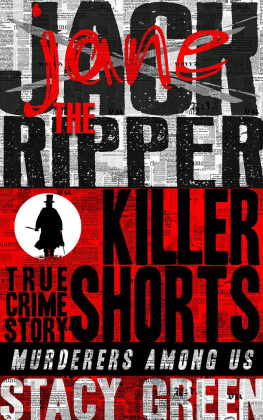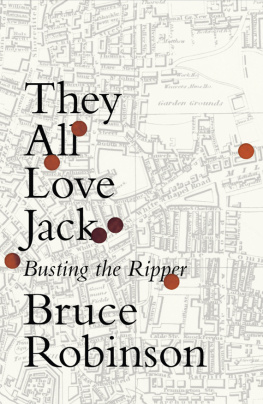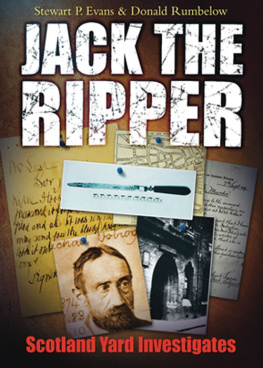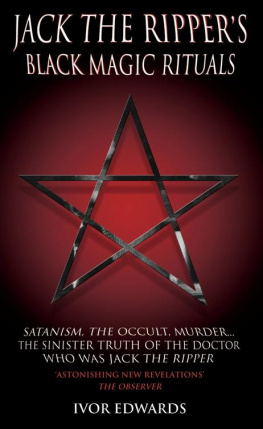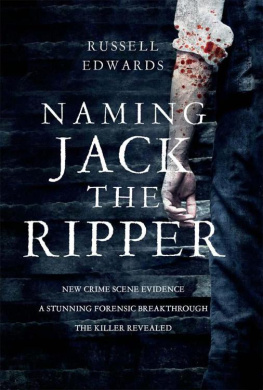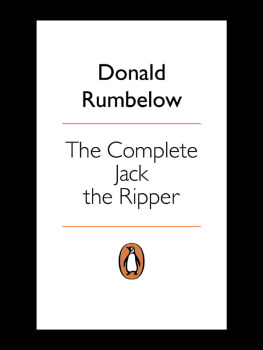
I CANT QUITE REMEMBER when I first met Robin Odell. I came to London in 1963 and my copy of his Jack the Ripper in Fact and Fiction is dated 1967, two years after publication. Clearly we were not on familiar name terms, as the book is inscribed to D. Rumbelow with a very impersonal With Compliments. Clearly, if the inscription is anything to go by, we were on much more personal terms when, eight years later, he wrote on the title page of his second book, Exhumation of a Murder, For Don Rumbelow, To keep your skin fresh2 minims of Fowlers solution each day ICC of Neosalvarsan puts the pox awayand 2 grains of Arsenious Oxide keeps the tax collector at bay. It is the polite With Compliments of the former that conveys, to this person at least, more the personality of the man than does the latter. Polite, gentlemanly, and, as ever, courteousthis to me is the essence of Robin Odell. It is a persona that fits in very well with the age of innocence, as he calls the sixties and seventies, when Ripper studies were not the rat pit of competing claims and egos that they seem to be today. Friendships were easy to make. There was a great generosity in the giving, lending, and exchanging of ideas and materials. Colin Wilson and Robin himself were among the most generous. Dont assume from this that there was a golden age in Ripperology. There was not always harmony. True, there were disagreements, but instead of the abuse and anonymity of the Internet, personal criticisms tended to be much more face to face. Friendships remained intact even when there was the occasional hiccup in relationships. Dan Farson before midday was a joy. Late evening was a nightmare. Next day, all was forgiven. The charm of the man was infectious.
I suspectI am almost certainthat it was Joe Gaute who introduced me to Robin. Harraps publishing house was on Ludgate Hill, City of London police territory, which is how I met Joe J. H. H. Gaute, who was a larger-than-life character. Carter Dicksons Gideon Fell could have been his brother. Joe had been in publishing for over fifty years. Murder was his life-long passion. Over several decades he amassed one of the finest crime collections in private hands. At his death, he had nearly 3,000 volumes. In 1935 he joined George Harrap and was able to commission many of the best-selling books that subsequently became a part of his library. One of the books that he commissioned was Robins. Another was Stephen Knights. Four years later, Robin and Joe collaborated on a highly successful trilogy beginning with The Murderers Whos Who, described by Colin Wilson as perhaps the most valuable single volume ever published on murder, and followed by Murder Whatdunit and Murder Whereabouts, based on the Gaute collection. The bibliographies and cross-references have shortened the research time for many a hard-pressed author.
What is it that is so fascinating about Jack the Ripper?
As a serial killer he is in the small-time league. He cant compete with a serial killer like Britains Dr. Harold Shipman, who murdered more than two hundred people. The number of Ripper victims is quite small, ranging from three to fourteen (the latter only if you count one of the victims twice, as the author did of that particular theory). The generally accepted number is the canonical five.
So what does make the murders unique?
The first thing possibly is the brand name. Whoever thought it up was a marketing genius. Next is the pall of glamour that has been thrown over what is in reality a succession of brutal murders. The social environment has been glamorized by film and television. Jacks London is the London of Sherlock Holmes. It is adventure London. It is the London of hansom cabs, top hats, large bustles, pearl studs, swordsticks, pistols in pockets, and a thick swirling fog through which stalks, knife in hand, a figure from hell. The hard facts that none of the murders were committed in fog, that the investigators looked like stockbrokers or bank clerks, and that the murderer was probably a common-looking figure wearing a butchers smock is generally overlooked. What is so unique about the case is that the Ripper flags the days, the weekends of the 8th or the 30th, when he is going to kill. All the murders, except the last, are done in the open. Never has the killing ground been so small. At its widest point it is a walk of fifteen minutes across. In no other murder case has the range of suspects been so great. At the top of the list is a future King of England. At the bottom is an out-of-work market porter. In between we have as suspects doctors, surgeons, an eminent artist, back street abortionists, crazed magicians, and many others. Never has the choice been so wide. Never has the confusion been so great. This is one of the reasons why this book is going to prove so invaluable. It imposes order and clarity on its subject.
In Jack the Ripper in Fact and Fiction (1965) Robin argued for the killer being a Jewish schochet, or slaughterman. Although I have disagreed with him in print, I feel now that such a person is more likely to have been the Ripper than one of the roll-call of illustrious suspects that gets longer and sillier every year. In 1987 Robin collaborated with Colin Wilson on Jack the Ripper, Summing Up and Verdict, which was indeed a magisterial summing up of the evidence and theories as they were on the eve of the centenary of the murders. Their book was the last word on what was known at the time. Nobody could have guessed at the amount of new material that was to surface between then and now. Perhaps the most astonishing discovery was the mortuary photographs of Nichols, Stride, and Eddowes. Then there was the Kelly postmortem notes, the Swanson marginalia, the controversy over the Maybrick diary, and a genuine suspect, completely missed by generations of researchers, in the person of the American Dr. Tumblety. Clearly, all this new material demanded an update, and this is what this book successfully achieves. What Robin has done is to weave a seamless tapestry of facts and theories into a smooth and effortless read. His book is a judicious review of all that we know to date. Nothing has been omitted. Certainly Robin is impartial; certainly he is fair.

